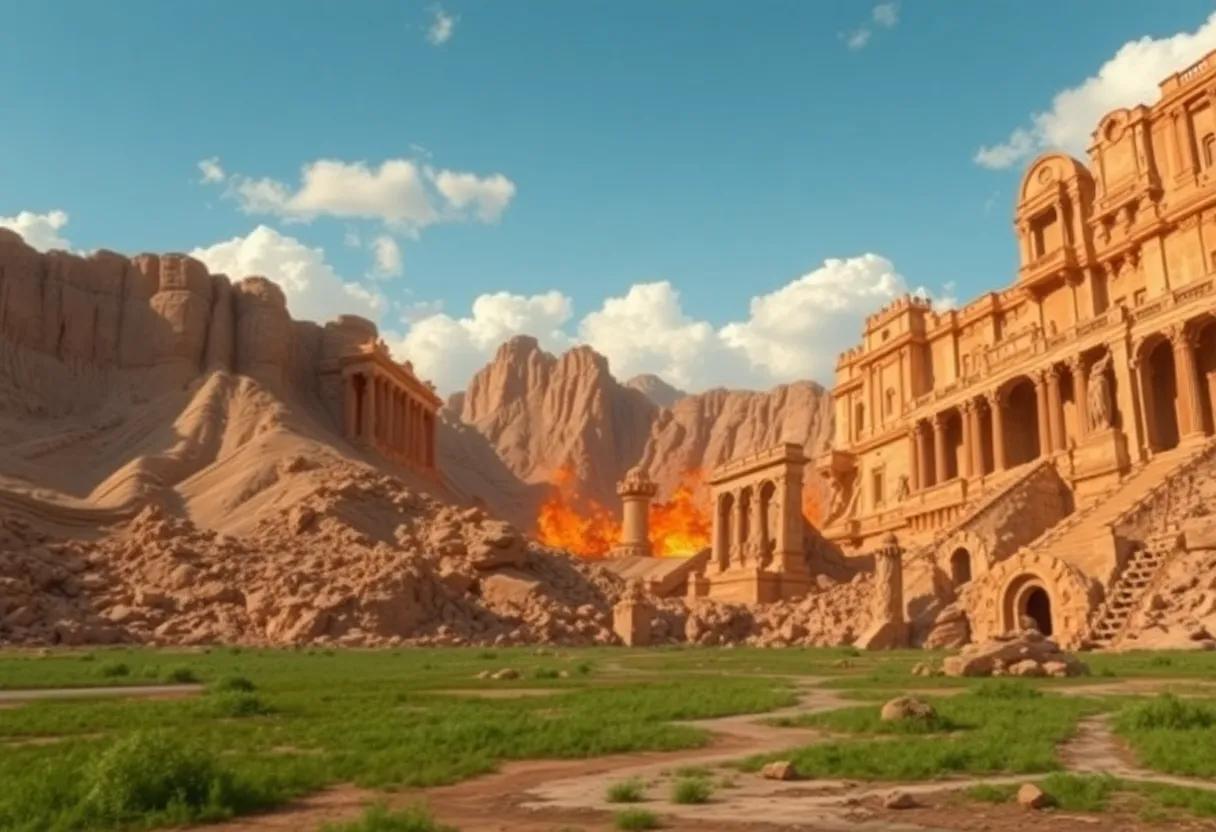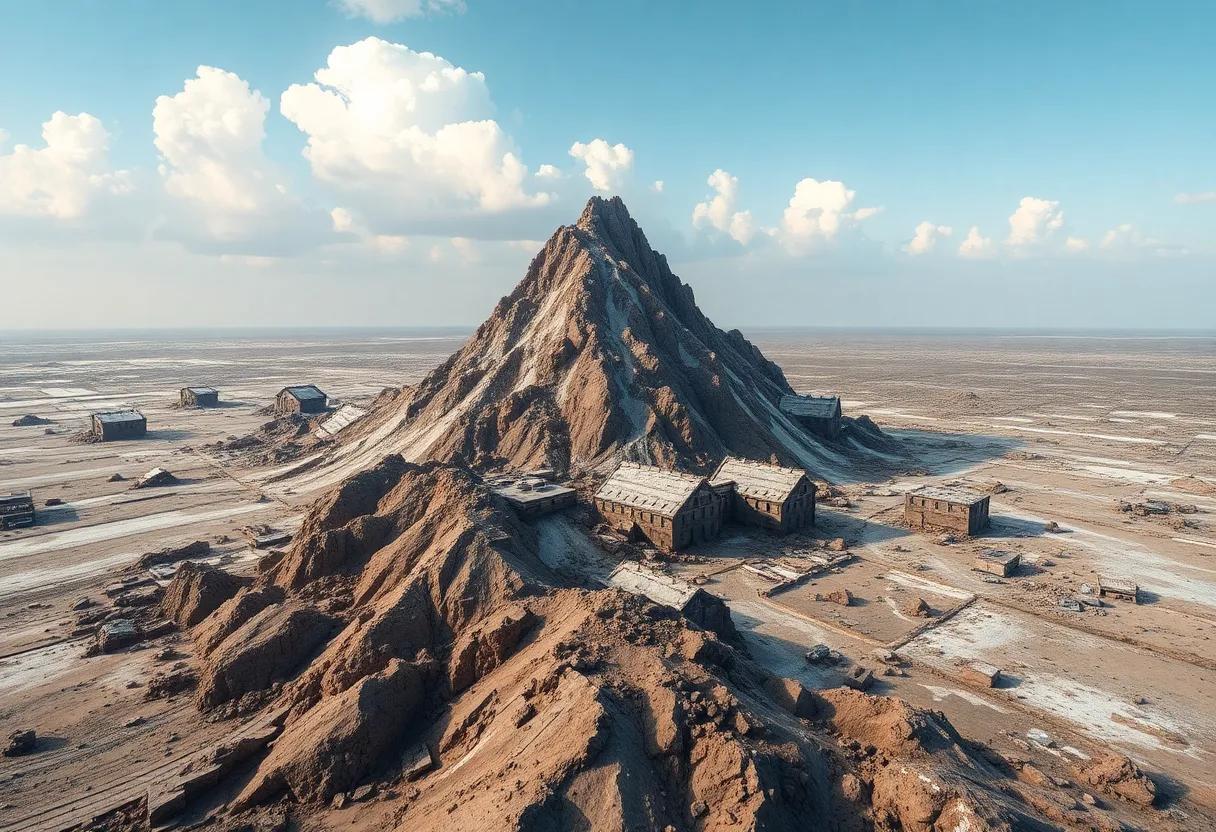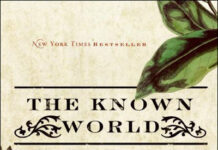In the realm of environmental and ancient inquiry, few works have sparked as much reflection and debate as Jared Diamond’s exploration of societal collapse. invites readers on a thoughtful journey through the intricate web of factors that have shaped civilizations’ fates. Rather than championing a singular narrative, this insightful analysis navigates through the complexities and controversies surrounding Diamond’s influential thesis, offering a measured outlook that encourages deeper understanding without surrendering to simplistic conclusions. As we turn the pages, we are prompted to reconsider not only the past but also the fragile dynamics that continue to influence societies today.
Exploring the Complex Causes Behind Societal Collapse Through Jared Diamond’s Analytical Framework and Case Studies

Jared Diamond’s approach to understanding societal collapse is a tapestry woven from interrelated environmental, social, and political threads. By dissecting historical case studies such as the Rapa Nui civilization on Easter Island, the Maya decline, and the downfall of Viking Greenland, Diamond emphasizes how a combination of ecological strain, resource mismanagement, and external pressures can dismantle even the most resilient societies. His framework urges us to examine not just one singular cause, but rather a complex web of factors – from deforestation and climate change to hostile neighbors and society’s internal responses – that culminate in collapse.
To illustrate the interplay of influences, consider the following simplified overview of environmental and societal stressors identified across key case studies:
| Case Study | Environmental Impact | political/Social Strain | External Threats |
|---|---|---|---|
| Rapa Nui | Deforestation, soil erosion | Resource competition, social hierarchy | Isolation, lack of trade |
| Maya Civilization | Prolonged drought | Internal conflict, overpopulation | Neighboring state warfare |
| Viking Greenland | Climate cooling (Little Ice Age) | Rigid social structures, inflexibility | Loss of European support |
This layered understanding invites readers to appreciate how multiple pressures converge, creating a threshold beyond which a society struggles to adapt or recover. Diamond’s analytical lens, while sometimes critiqued for simplicity, effectively underscores the necessity of considering environment and culture as inseparable partners in the fate of civilizations - a crucial lesson as modern societies face thier own unprecedented challenges.
Assessing the Role of Environmental Factors Versus Human Decisions in the Downfall of Civilizations

When dissecting the intricate dance between environmental pressures and human agency in societal collapse, it becomes evident that neither factor operates in isolation. Environmental challenges-such as deforestation, drought, and soil degradation-often set the stage by pressuring resources and destabilizing ecosystems. Yet, it is the human decisions in managing thes crises that frequently determine the trajectory toward resilience or ruin. Adaptability, governance structures, and cultural values emerge as pivotal lenses through which to view choices made under duress, influencing whether societies innovate solutions or double down on destructive behaviors.
- Environmental catalysts: Climate fluctuations, natural disasters, resource depletion
- Human responses: Political will, social organization, technological innovation, cultural attitudes
| Factor | Impact on Collapse | Human Role |
|---|---|---|
| Deforestation | Accelerated soil erosion | Unchecked land use policies |
| Drought | Crop failures | Water management strategies |
| Political Fragmentation | Weakened collective action | Leadership decisions |
This nuanced interplay suggests that the fate of civilizations often hinges on a society’s ability to interpret environmental signals accurately and respond collectively. Collapses are seldom the inevitable outcome of nature’s wrath alone but are compounded by the degree to which human decisions either mitigate or exacerbate environmental insults. Therefore, assessing both the ecological context and socio-political decision-making is essential to understanding historical downfalls and drawing lessons for contemporary challenges.
A Closer Look at the Interplay Between Technology, Culture, and Resource Management in Historical Societal Failures

At the heart of many historical societal failures lies a complex web where technology, culture, and resource management intersect. Technology, while often hailed as the driver of progress, can paradoxically accelerate decline when applied without foresight. Innovative tools might increase short-term yields or military power, but without a cultural framework that values sustainability and adapts to ecological limits, these advantages can hasten depletion. Consider the paradox:
- Advanced irrigation systems that initially boost agricultural output but lead to salinization draining fertile soils.
- complex weaponry granting dominance, yet provoking destabilizing conflicts.
- Resource extraction techniques enhancing wealth, yet disrupting long-term ecological balance.
Culture acts both as a lens shaping perception and as a rulebook guiding behavior. Societies that embraced adaptability, social equity, and ecological respect frequently enough found ways to circumvent collapse. Meanwhile, rigid ideologies and exclusionary beliefs sometimes blinded communities to looming threats or alternative solutions. The delicate dance between cultural values and resource stewardship becomes evident when analyzing how different societies responded to stress:
| Societal Trait | Adaptive Example | Maladaptive Example |
|---|---|---|
| Resource Use Beliefs | Renewable harvesting & conservation | Overexploitation & hoarding |
| Social Structure | Inclusive decision-making | Hierarchical rigidity |
| Technological Approach | Contextual innovation | Unrestrained expansion |
Unpacking Jared Diamond’s Use of comparative History to Draw Lessons From Past Collapses for Modern Societies

Jared Diamond’s method hinges on weaving together threads from disparate civilizations,eras,and geographies to form a tapestry of human experience with societal collapse. By juxtaposing ancient societies like the Ancestral Puebloans with more recent examples such as Easter Island, Diamond leverages comparative history not merely to inform but to warn. His approach invites readers to identify common fault lines-environmental mismanagement, social fragmentation, and external pressures-that resonate across time, highlighting that no society, regardless of its sophistication, is immune to failure.This analytical framework transcends simplistic cause-effect narratives, rather offering a multi-dimensional lens where past mistakes morph into cautionary principles for today’s global community.
Through this comparative prism, Diamond classifies collapse drivers in an accessible format, which can be outlined as:
- Ecological Damage: Unsustainable resource use leading to environmental degradation.
- Climate Change: Shifts in climate patterns disrupting food and water supply.
- Hostile Neighbors: External conflicts exacerbating internal vulnerabilities.
- Loss of Trading Partners: Economic isolation threatening societal stability.
- Societal Response: How internal decisions amplify or mitigate risks.
| Society | Primary Collapse Factor | Modern Parallel |
|---|---|---|
| Easter Island | Ecological Damage | Deforestation & Biodiversity Loss |
| Viking Greenland | Climate Change | Climate-Driven Migration |
| Mayan Civilization | Social Unrest & Drought | Water Scarcity & Political instability |
Evaluating the Strengths and Limitations of Diamond’s Approach to Understanding Societal Resilience and Vulnerabilities

Jared Diamond’s analytical lens offers a compelling framework for dissecting the complex dynamics that shape societal resilience and vulnerabilities. His emphasis on environmental factors, resource management, and decision-making processes provides a multidimensional approach that stretches beyond linear historical narratives. By intertwining ecological contexts with cultural and political dimensions, Diamond invites readers to consider how interconnected pressures can catalyze either adaptive success or catastrophic failure. This holistic perspective is valuable, as it transcends simplistic blame and encourages a systems-thinking approach to understanding societal outcomes.
Though, the approach is not without its notable critiques.Diamond’s tendency to spotlight environmental determinism sometimes underplays the role of human agency, social structures, and contingency in shaping history. Critics argue that this can lead to an oversimplification of highly intricate socio-political realities. Additionally, some case studies in his work gloss over internal societal adaptations and the diversity of experiences within a given culture. The following table highlights key strengths and limitations, offering a concise snapshot of the balance needed when engaging with his thesis:
| Strengths | Limitations |
|---|---|
| Integrative analysis of environment and society | Overemphasis on environmental determinism |
| Accessible synthesis of multidisciplinary research | Underrepresentation of social and political complexity |
| Encourages systems thinking and long-term perspectives | Occasional generalizations in comparative case studies |
How Climate Change and Ecological Pressures Serve as Recurring Themes in the Book’s Exploration of Collapse
Jared Diamond’s narrative consistently intertwines the forces of climate change and ecological strain as catalysts in the downfall of societies.Through his meticulous analysis, environmental degradation emerges not merely as a backdrop but a dynamic agent compelling civilizations toward collapse. Whether it’s deforestation exhausting the resources of Easter Island or soil erosion undermining the Maya, these ecological factors create a domino effect, exacerbating social tensions and economic vulnerabilities. Diamond emphasizes that the interplay between human activity and natural systems is often the tipping point where resilience falters, highlighting a recurring pattern of shortsighted resource use that spirals into crisis.
To better grasp these connections, here’s a concise overview of ecological pressures alongside their societal impacts, drawn from the case studies examined:
| Ecological Pressure | Societal Consequence |
|---|---|
| Deforestation | Loss of timber, soil erosion, declining agricultural yield |
| Climate Fluctuations | Crop failures, food shortages, migration pressures |
| Water Scarcity | Conflict over resources, economic decline |
| Biodiversity Loss | Reduced ecosystem resilience, collapse of fisheries |
- Ecological mismanagement often accelerates societal fragility.
- Combined stresses usually compound collapse rather than act in isolation.
- Human decisions remain intrinsic to how environmental pressures translate into societal outcomes.
The Influence of Political Structures and Social Cohesion in Preventing or Accelerating societal Decline According to Diamond
jared Diamond emphasizes that the architecture of political systems plays a pivotal role in the fate of civilizations. Complex, adaptable governing bodies that integrate diverse social groups often bolster a society’s resilience against internal fractures and external shocks. Conversely, rigid or overly centralized regimes may falter under pressure, accelerating decline by alienating segments of the population or by failing to respond swiftly to environmental and economic challenges. Social cohesion acts as a glue, enhancing trust and cooperation among citizens, which is essential for collective problem-solving during crises. When social bonds weaken-due to inequality,corruption,or cultural fragmentation-the fabric of the society frays,making collapse more likely.
- Inclusive governance: Encourages shared responsibility and stable rule of law.
- Social inequality: Seeds distrust and erodes cooperation.
- Mobilization capacity: Ability to organize resources and respond to threats.
- Cultural integration: Strengthens identity and common purpose.
| Political Structure | Effect on Societal Stability | Example |
|---|---|---|
| Decentralized Confederacy | Encourages local autonomy and versatility | Iroquois Confederacy |
| Authoritarian Monarchy | Risks rigidity and slow adaptation | Ancient Egypt (Late Period) |
| Federal Systems with Checks | Balances power and fosters cooperation | Modern Democratic states |
Diamond’s analysis reveals that no political structure is inherently doomed or destined for greatness; rather, their effectiveness depends on dynamic adaptability and the ability to maintain social harmony. societies that cultivate solidarity through equitable policies, shared cultural narratives, and responsive leadership tend to mitigate risks that might otherwise spiral into decline. In this way, the interplay between governance and social cohesion becomes a decisive factor, turning potential crises into opportunities for renewal rather than collapse.
practical Recommendations Offered in the Book for Policymakers to Mitigate Risks of Societal Breakdown today
diamond’s analysis urges policymakers to integrate long-term environmental stewardship with socio-economic planning to prevent societal decline. Central to his advice is the prioritization of sustainable resource management, which includes careful monitoring of water supplies, soil quality, and forest health. Decision-makers are encouraged to embrace adaptive strategies that anticipate changing conditions rather than react to crises.This means fostering collaboration across government levels and communities to identify risks early and respond cohesively,thus avoiding fragmented efforts that can exacerbate vulnerabilities.
In practical terms, his recommendations can be distilled into actionable approaches that bridge ecological wisdom with governance efficiency:
- Invest in resilient infrastructure designed to withstand both environmental and social stresses.
- Promote equitable resource distribution to reduce tensions caused by scarcity.
- Encourage diversified economies which are less vulnerable to environmental shocks.
- Support transparent policy-making enabling public engagement and accountability.
| Policy Focus | Key Outcome |
|---|---|
| Resource Conservation | Prolonged ecological balance |
| Social Equity Programs | Reduced conflict potential |
| Disaster Preparedness | Enhanced community resilience |
| Cross-sector Collaboration | Holistic problem-solving |
Balancing Caution and Optimism: Insights Into How Diamond Encourages Sustainable Thinking for Future Generations
Jared Diamond masterfully weaves a narrative that neither succumbs to despair nor indulges in unchecked optimism. Instead, he crafts a nuanced framework showing how societies can be both vulnerable and resilient. by delving into the forces that led to historical collapses-such as environmental mismanagement, social divisions, and external pressures-Diamond encourages readers to reflect on the delicate interplay between human choices and natural limits. This dual perspective fosters a mindset where caution drives awareness, yet hope fuels proactive solutions for future stewardship.
Within his analysis, several principles emerge as cornerstones for sustainable thinking, actively inviting reflection and action:
- Learning from the past: Recognizing mistakes to rewrite the future.
- Holistic decision-making: Considering environmental, social, and economic factors collectively.
- Community resilience: Strengthening social bonds and adaptability.
- intergenerational ethics: Prioritizing the well-being of those yet to come.
| Principle | Impact | Example |
|---|---|---|
| Learning from the past | Prevents repeated errors | easter island’s deforestation |
| Holistic decision-making | balanced resource use | Water management in ancient Maya |
| Community resilience | Fosters adaptability | Inuit social networks |
| Intergenerational ethics | Ensures future sustainability | Indigenous land stewardship |
Cultural Bias and Controversies: Critically Examining the Reception and Scholarly Debate Surrounding Unraveling collapse
Jared Diamond’s exploration of societal collapse has sparked a vigorous discourse, igniting debates over potential cultural biases embedded within his narrative framework. Critics argue that his tendency to cast Western societies as benchmarks for success and sustainability can unintentionally reinforce Eurocentric perspectives,while sidelining indigenous knowledge systems and alternative forms of resilience.This approach has raised questions about the inherent assumptions underlying the environmental determinism Diamond proposes, as well as concerns over the simplification of complex historical trajectories into neat causal chains. Key points often highlighted include:
- Overgeneralization: Using select case studies to extrapolate universal collapse triggers.
- Ethnocentric framing: Prioritizing Western interpretations of societal success and failure.
- Neglect of agency: Underrepresenting the roles of culture, politics, and power dynamics.
In academic circles, the debate pivots toward assessing whether Diamond’s work serves as a valuable heuristic tool or an overly deterministic template that sidelines nuance. Some scholars praise his synthesis for sparking interdisciplinary dialog, while others advocate for more contextualized, multifaceted analyses that reflect complexity. Below is a comparison highlighting divergent scholarly perspectives on key themes:
| Theme | Supporters’ viewpoint | Critics’ Viewpoint |
|---|---|---|
| environmental Determinism | Highlights critical ecological factors as universal stressors | Oversimplifies collapse by neglecting human agency and variability |
| Use of Case Studies | Provides illustrative examples to understand patterns | Risk of cherry-picking and cultural homogenization |
| Impact on Policy | Informs sustainable development and preventive measures | May lead to deterministic policies ignoring social complexity |
Visualizing the Global Scope of Collapse: Imagery and Maps that Enhance Understanding of Jared Diamond’s Narrative
diamond’s exploration of societal collapse gains visceral clarity through the strategic use of maps and imagery. These visual tools serve not just as embellishments but act as essential anchors that ground his sweeping narrative in tangible geography and time. As an example, maps delineating deforestation, resource depletion, and climatic shifts across continents invite readers to witness the spatial dimensions of environmental stresses. Such visual storytelling transforms abstract concepts into *graspable realities*, allowing the reader to perceive how isolated footprints can collectively spiral into global consequences.
Key visual elements include:
- Comparative charts showing population trends juxtaposed with resource consumption
- Color-coded maps highlighting areas of ecological degradation over centuries
- Infographics summarizing societal responses to environmental pressures
The interplay of these visuals with the text provides a layered understanding-encouraging readers not only to think critically about individual societies’ fates but also to contextualize collapse as a multifaceted, global phenomenon. Below is a simplified snapshot illustrating environmental and societal factors across select civilizations:
| Civilization | Primary Environmental Stress | Collapse Factor | Visual Reference |
|---|---|---|---|
| Maya | Deforestation & Drought | Resource Scarcity & Conflict | Maps of drought patterns |
| Easter Island | Overexploitation of Trees | Economic & Social Breakdown | Deforestation maps & statues imagery |
| Greenland Norse | Climate Cooling | Isolation & Famine | Temperature trend graphs |
Writing Style and Narrative Voice That Make Complex Historical and Scientific Analysis Accessible and Engaging
Jared Diamond’s approach blends rigorous scholarship with a conversational tone that invites readers from all backgrounds into the conversation. He distills complex theories and vast historical data into clear, vivid narratives, punctuated by analogies and well-chosen examples that resonate beyond academic circles. His narrative voice avoids jargon without oversimplifying, striking a balance that keeps the reader both informed and engaged. This technique serves not only to clarify intricate environmental and societal dynamics but also sparks curiosity, encouraging deeper exploration of topics such as resource management, cultural evolution, and environmental impact.
The structure of the analysis employs a thoughtful layering of concepts, reminiscent of a well-crafted story unfolding through time. Key elements include:
- Multi-disciplinary insights: weaving anthropology, ecology, and history into a cohesive tapestry.
- Case studies: relatable examples from diverse societies that humanize abstract ideas.
- Progressive complexity: building understanding incrementally rather than overwhelming the reader.
To illustrate how this balance operates at a glance, consider this simplified comparison of narrative elements used:
| Element | Function | Effect on Reader |
|---|---|---|
| Storytelling | Transforms data into compelling narratives | Enhances engagement and retention |
| Analogy | Bridges unfamiliar concepts with familiar ideas | Aids comprehension and relatability |
| Clear prose | Reduces cognitive load | Invites wider audience participation |
About Jared Diamond The Geographer and Ecologist Behind the Influential Work on Societal Collapse and Human History
Jared Diamond stands out as a luminary in both geography and ecology, whose interdisciplinary approach has reshaped how we understand the trajectory of human societies. His work bridges environmental science, anthropology, and history, crafting narratives that connect the fate of ecosystems with the rise and fall of civilizations. Rather than viewing societal collapse as a purely political or economic issue, Diamond underscores the intricate web of environmental pressures, resource management, and social choices that steer collective destinies.
His ability to synthesize complex data into accessible explanations has sparked widespread debate and admiration alike. Diamond’s insights are frequently enough summarized through key factors he explores, such as:
- Environmental damage – how societies impact their ecosystems
- Climate change – external forces shaping human survival
- Hostile neighbors - conflicts influencing societal stability
- Trade relations - economic dependencies affecting resilience
- Society’s response – cultural choices in crisis management
| Field | Contribution |
|---|---|
| Geography | Analyzing spatial relationships in human-environment interaction |
| Ecology | Understanding resource limitations and ecosystem fragility |
| History | Tracing patterns of societal development and decline |
in unraveling the threads of Jared Diamond’s exploration, this review has sought to illuminate both the strengths and shadows woven into his narrative. “Unraveling societal Collapse” invites readers to ponder the intricate dance of environment, culture, and choice that shapes civilizations. while it may spark debate over its conclusions, the work undeniably enriches the dialogue on why societies fall and endure. As we close this chapter,the true value lies not just in answers,but in the questions it leaves us eager to examine further.











